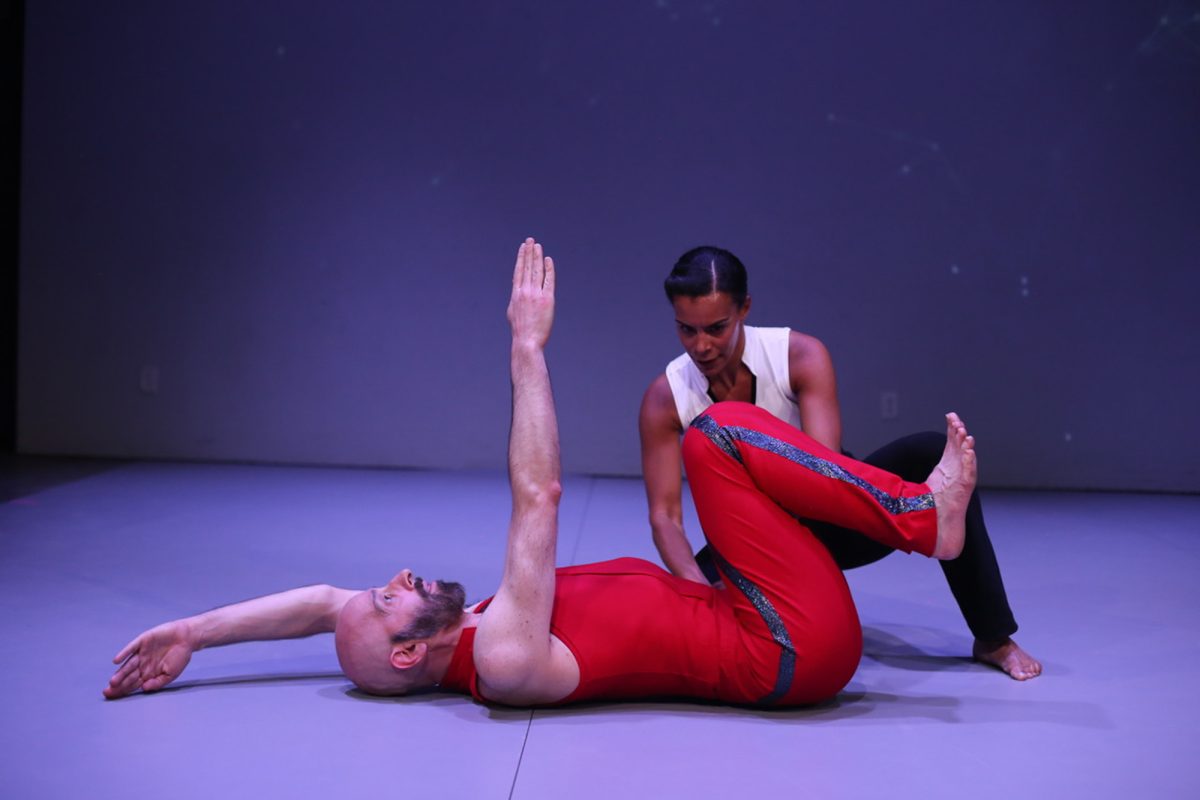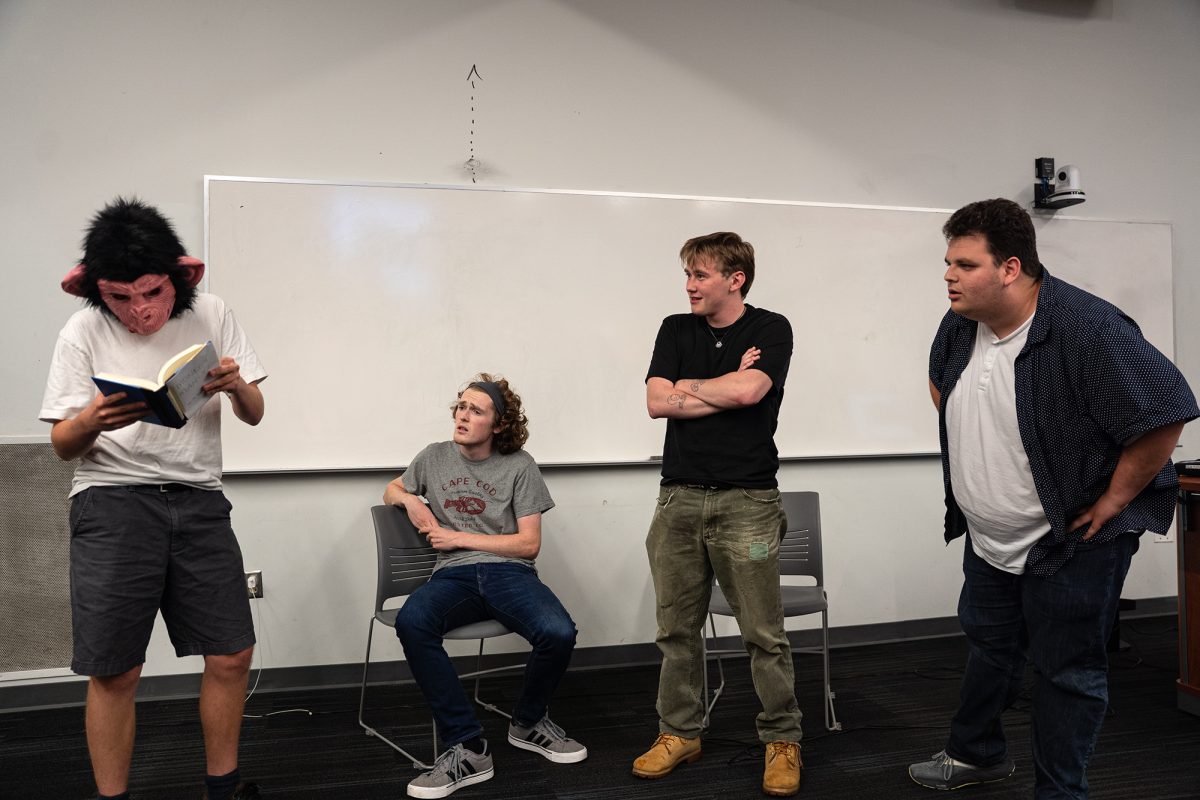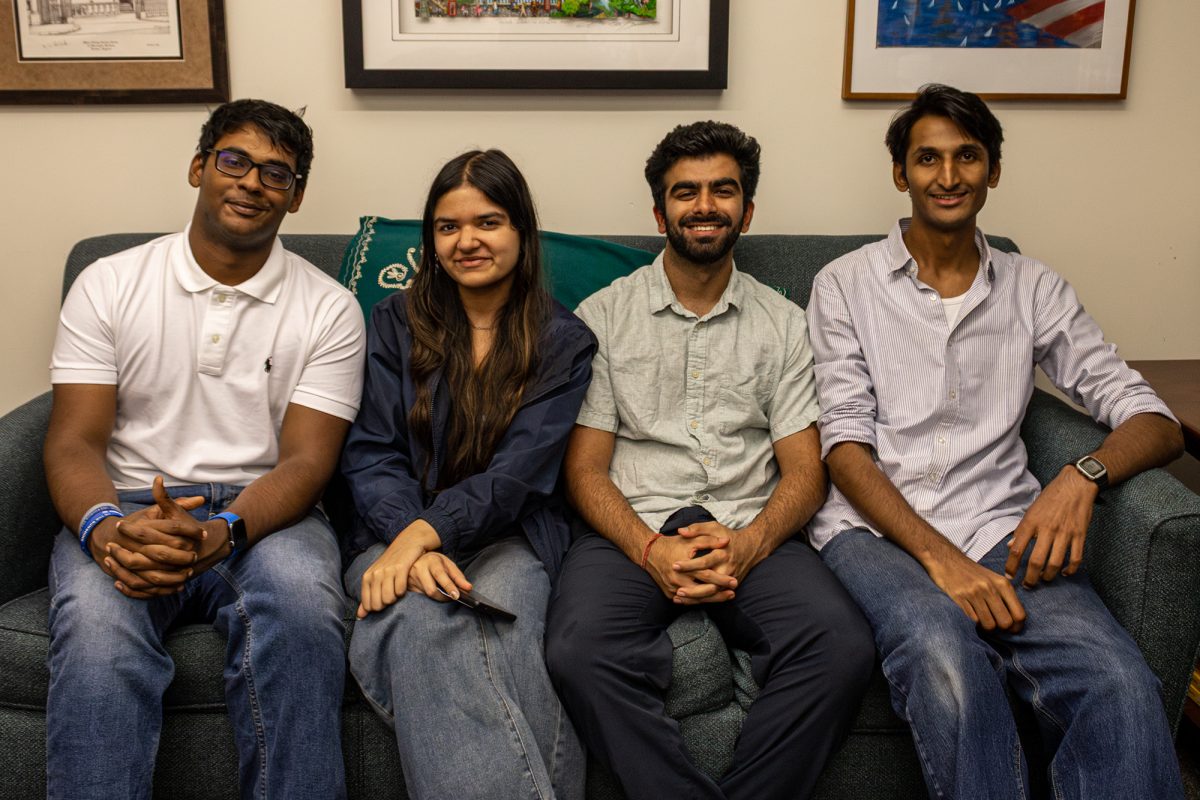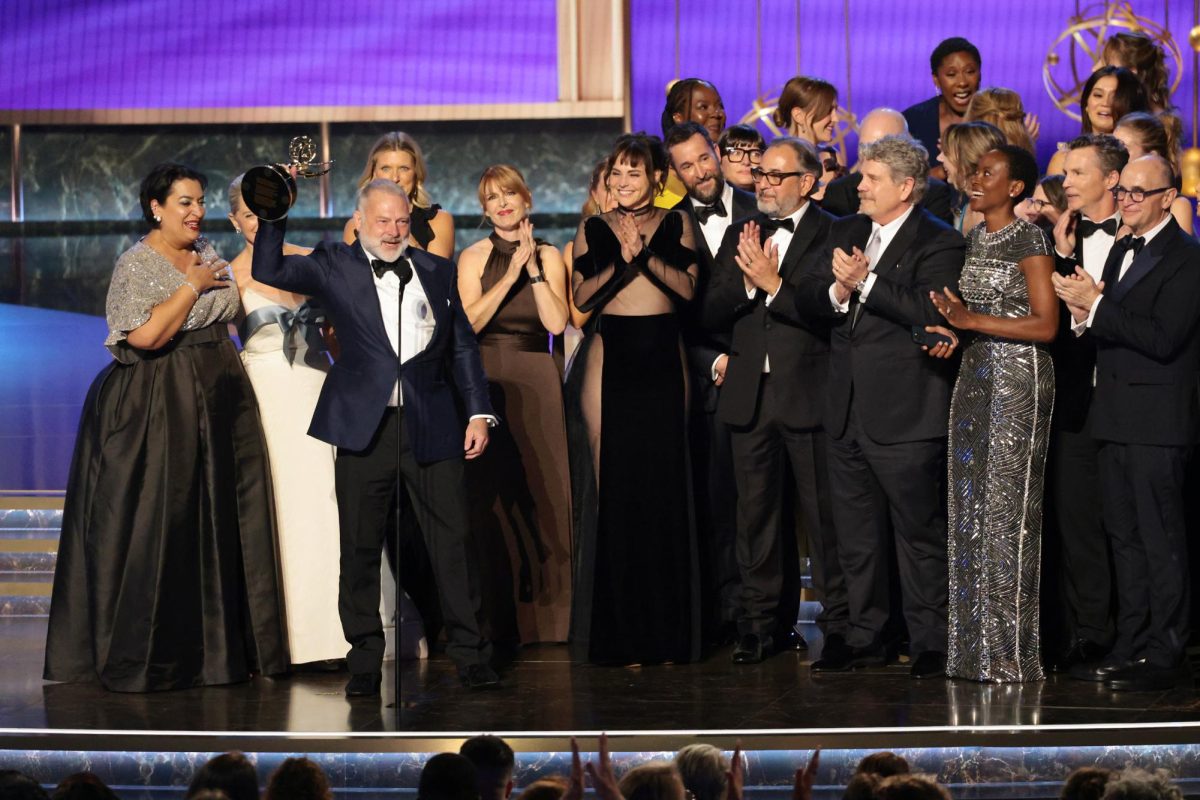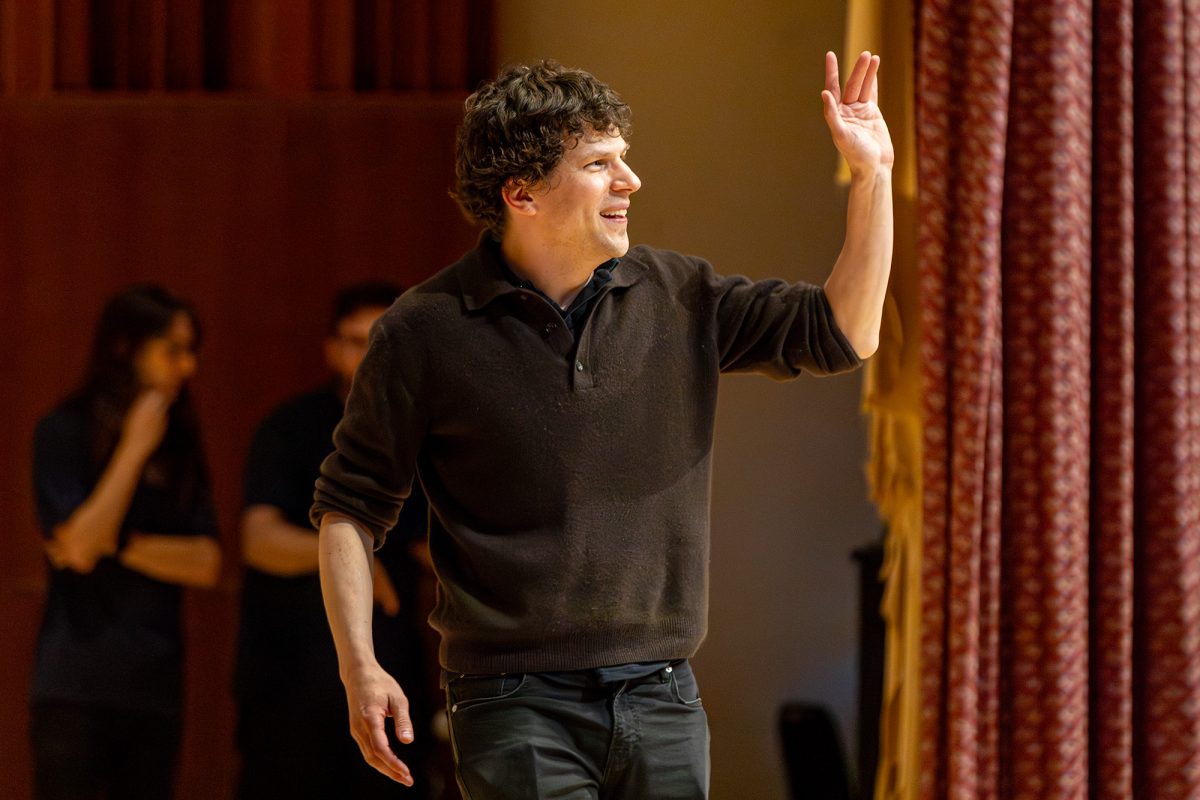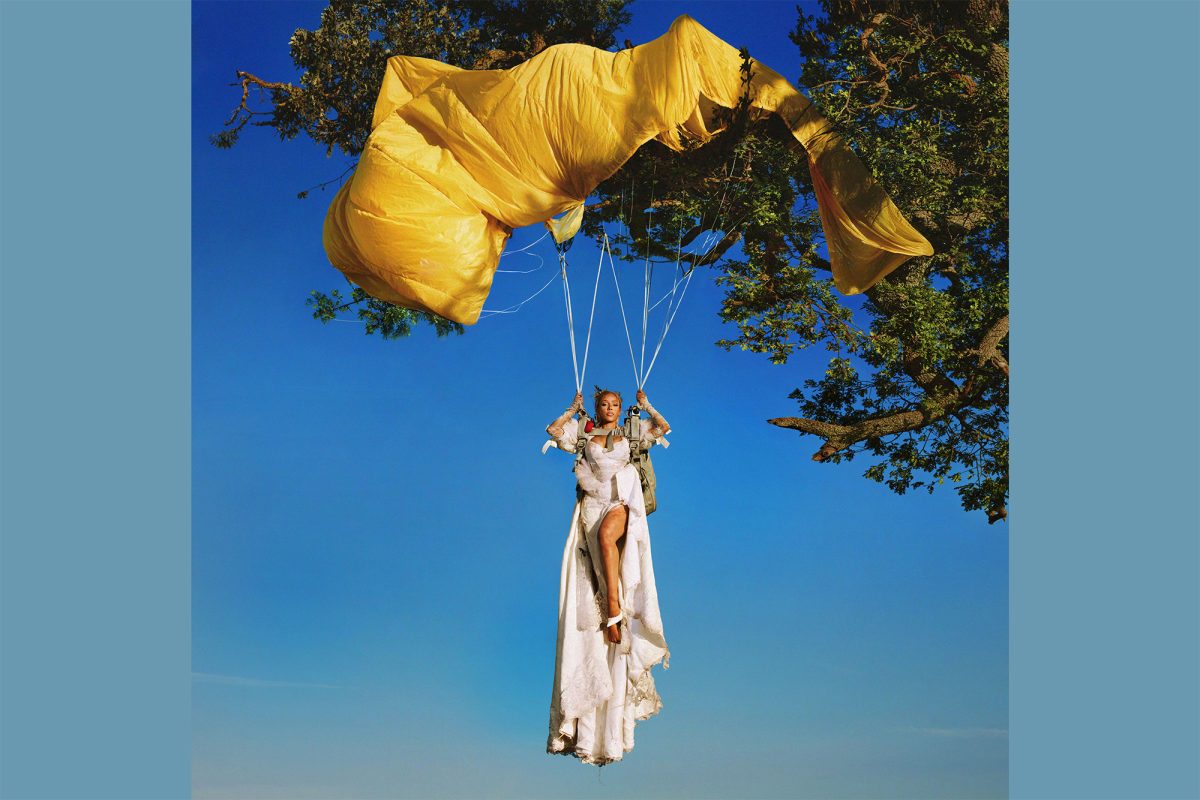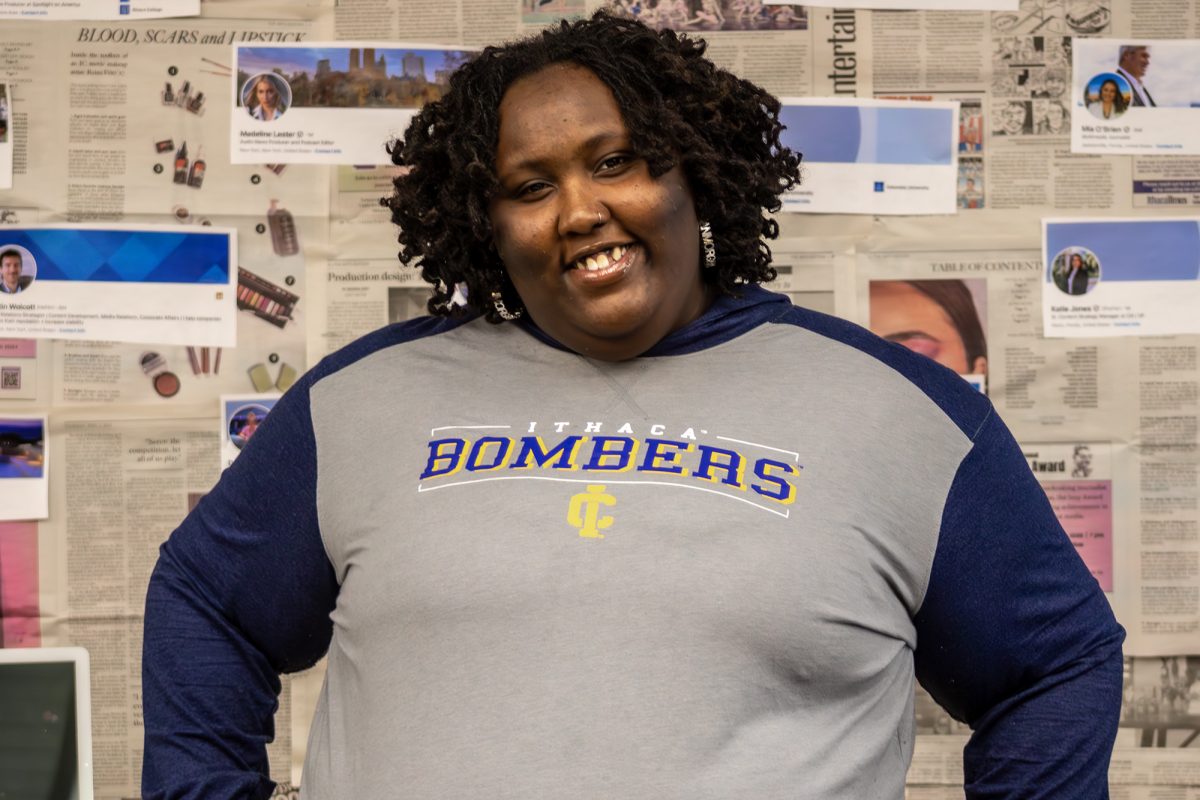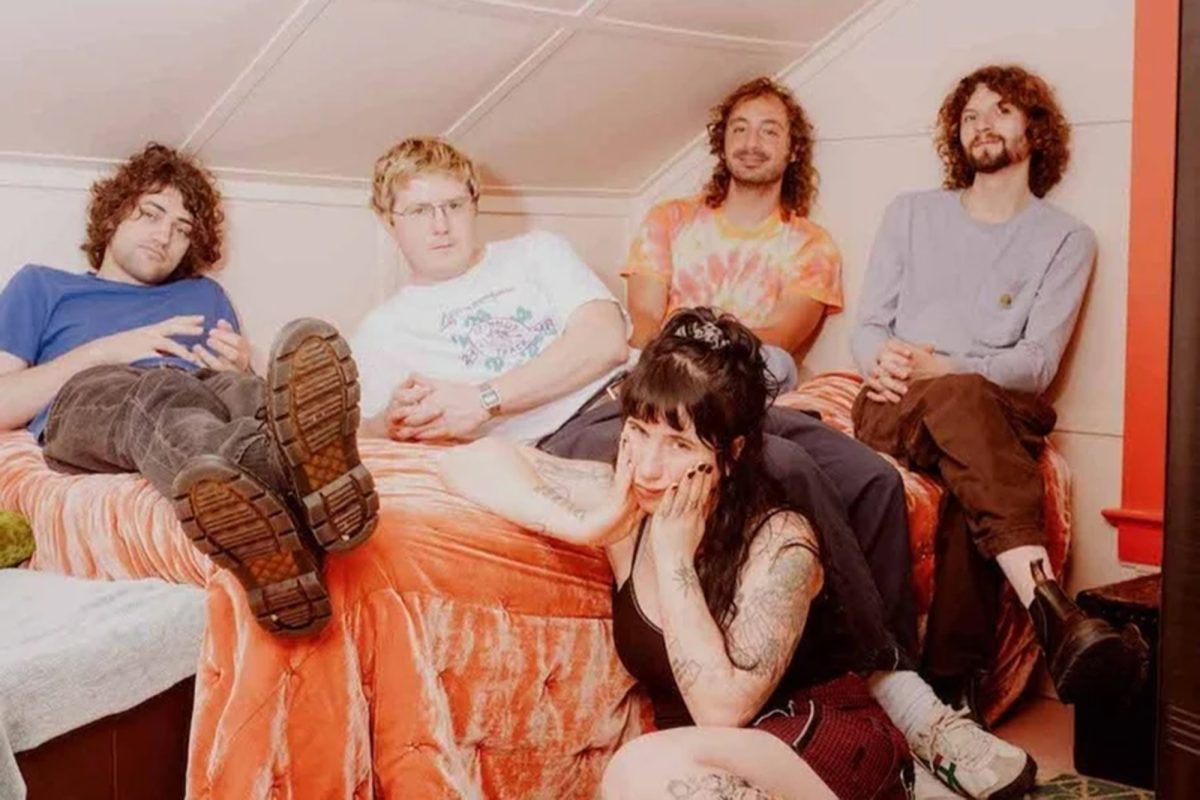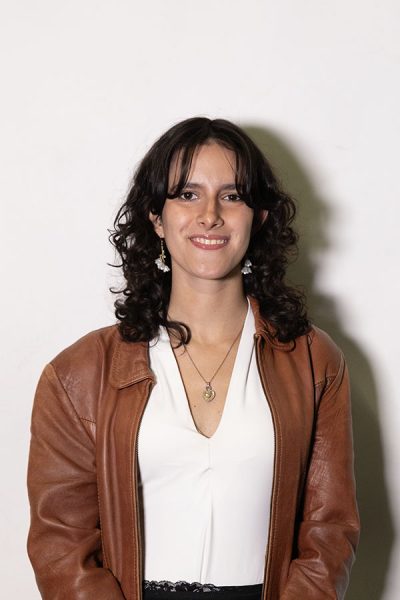“e-Motion” will take the stage at the 20th anniversary of the La MaMa Moves! Dance Festival, presented by Daniel Gwirtzman Dance Company, in New York City from April 18 to 20. Alongside Gwirtzman, performer and assistant professor in the Department of Theatre and Dance Performance, is Saviana Stănescu, playwright and associate professor and chair of the Department of Theatre Studies, whose script forms the conceptual backbone of the dance-theater duet.
At its core, “e-Motion” is a narrative about artificial intelligence being introduced to the world. Beyond its storyline of machine learning and emotional evolution, the piece represents something more intimate: the creative synergy between two full-time educators who continue to thrive as working artists.
“This piece had to work as both a dance performance and as a dramatic story. Daniel and I wanted to talk about human-AI connectivity and see how that can be suggested and performed in a dance theater piece,” Stănescu said. “We’re [inspired by] Frankenstein; or, the modern Prometheus by Mary Shelley.”
Blending neuroscience, text, choreography and ethics, “e-Motion” is a hybrid performance that represents AI in a very humane and provoking manner. Both Stănescu and Gwirtzman were intrigued by the conversation around AI about two years ago when Stănescu said they started working on this piece. It premiered at The Cherry Arts in May and June of 2023.
The duet, performed by Gwirtzman and dancer Sarah Hillmon, tells the story of an AI humanoid robot launched into the world and its relationship with neuroscientist and creator, Ava. Gwirtzman said “e-Motion” explores ethical boundaries through AI’s perspective as it develops its own consciousness.
“It’s very clear that as AI becomes more prevalent in our life … there are these serious questions of … what’s too far and raising concerns that there’s no going back,” Gwirtzman said. “There’s still an opportunity to try to put some guardrails to prevent either people from losing sense of a reality that AI — for all of its wonderful benefits — can never be an actual person.”
Stănescu said she and Gwirtzman wanted to explore these issues two years ago before they became even more relevant. Those concerns — of artificial consciousness, emotional intelligence and the risks of runaway technology — have become central not only to “e-Motion” but also teaching at Ithaca College.
“At this point we are looking at ways in which to incorporate AI into our teaching,” Stănescu said. “Obviously AI [can be] a tool. … However, people are increasingly worried that AI can learn so much from us that it can develop consciousness, that it can be harmful at some point against humans. … I think there are many ways now to think about AI, but we shouldn’t lose sight of the fact that we need to be mindful and careful of how we use it.”
The impact of the piece has not been limited to the stage. This semester, Gwirtzman brought sections of “e-Motion” into his Partnering in Dance class, inviting students to engage with the choreography first-hand. Senior Brooklyn Moore, who is in Gwirtzman’s partnering class and modern dance class, said Gwirtzman has created a sense of community that resembles a dance company.
“He has given me so much faith in myself doing these choreographies that are at a professional level,” Moore said. “You’re learning stuff that people are performing in New York City, at big festivals like that is such a big deal. … Daniel really made me feel like I can do this — I could be a professional dancer.”
Moore said Gwirtzman’s dual role as a professional choreographer and a professor is something she finds motivating.
“[He’s] a dancer first, before [he’s] a teacher,” Moore said. “You see the care and consideration that he has for every single move, even down to the tips of his toes and the tips of his fingers. That’s really awesome and something I want to implement in my artistry.”
Stănescu said she sees teaching as a space to challenge students to think across disciplines and dominant narratives.
“That’s some of the best ways for students to explore their creativity in connection and interconnection with others,” Stănescu said. “We encourage our students to create and learn and take classes in different fields.”
For Gwirtzman, teaching and performing are deeply interconnected. He said he is able to apply his real-time skills to instructing students.
“What you’re doing now in the classroom with your peers can continue and be so meaningful and satisfying as a career,” Gwirtzman said. “It’s so much more fun to work on this project with Saviana than to have developed a dance alone. It’s the energy. It’s holding accountability for each other and really being able to bounce ideas off [one another].”
First-year student Emily Marx said that seeing School of Music, Theatre, and Dance faculty members still have active professional careers was one of the deciding factors in committing to the college. She said that having someone so involved in the artistic community outside of just the college campus is really exciting.
“[Through Gwirtzman’s work I] know that there’s always room for more creation and there’s always going to be opportunities to create,” Marx said. “Being able to see him do individual and collaborative projects with all the people he has met throughout the years, makes me excited to foster connections and to continue to inspire and be inspired.”
“e-Motion” has become a statement in the power of collaboration — not just among disciplines, but among people who trust and challenge each other to take creative risks. Gwirtzman said he wants to model to students that there are no limits in the performance world and the collaborative process will yield a greater result than one could do alone.
“I think the students recognize that we, as the creators of this piece, [are putting ourselves] out into the unknown where there’ll be critical response,” Gwirtzman said. “We are modeling fearlessness and a desire to be vulnerable, to take chances and risks. The definition of success is [in] trying, the pleasure of the process and the enjoyment of that process.”



